The Wholesome Journey - Group Nutrition Coaching Program
Mentorship Program, 1:1 Nutrition Coaching with Alison
What do you want to learn more about?
Program Login
Podcast Features
December 8, 2017
Alison Tierney, MS, RD, CD, CSO
Alison is a registered dietitian, board-certified in oncology nutrition, and a cancer thriver. Her expertise in oncology nutrition and personal experience with her own cancer diagnosis and its treatment provide her with the unique perspective of being able to relate to her clients on an entirely different level. Her content is consistently focused on evidence-based guidelines and seeks to increase the awareness of the power of nutrition to complement traditional cancer therapies.
- Alison Tierney, MS, RD, CD, CSO
- Alison Tierney, MS, RD, CD, CSO
- Alison Tierney, MS, RD, CD, CSO
- Alison Tierney, MS, RD, CD, CSO
The holiday season is often full of parties, dinners, and gatherings of the like. You can bet any holiday event you attend is going to be centered around food and drink.
Appetizers.
Desserts.
Christmas cookies.
Comfort foods.
Wine and cocktails.
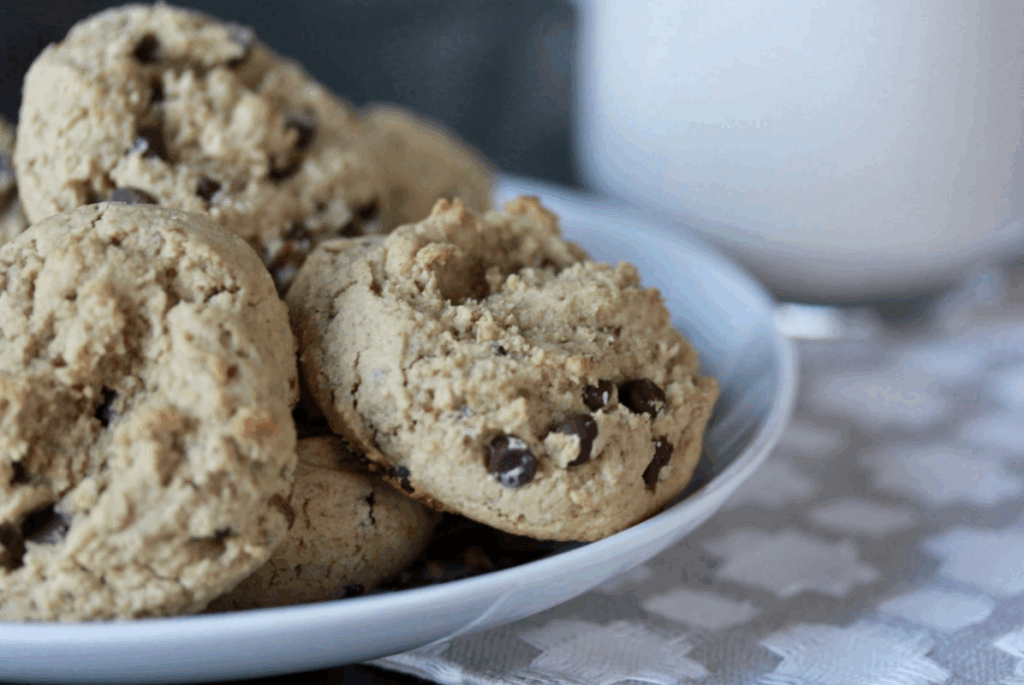
Based on my experience with patients, many of us do enjoy this time, but also dread the temptations! Am I right?
The goal for many throughout the holiday season is to maintain weight because of all the delicious temptations above which is a great goal!
In fact, research shows individuals gain an average of 1-2 pounds throughout the holiday season. The issue with this weight gain is that most never lose these 1-2 pounds. Then, all of a sudden, you look down at the scale in several years and wonder where the weight gain came from.
To help you avoid the holiday weight gain this year, I’ve put together 10 of my favorite tips and tricks that work for me and my patients!
1. Watch your liquid calories.
The holiday season tends to bring heavy amounts of caloric beverages. Alcohol, apple cider, hot chocolate, wine, beer, or holiday cocktails. Many are familiar with the calorie content of sweetened beverages, but most don’t realize the calories in alcohol.
Let’s consider the number of calories per gram:
1 gram of fat = 9 calories.
1 gram of protein or carbohydrate = 4 calories
1 gram of alcohol = 7 calories
Yep, there are more calories per gram of alcohol than protein or carbohydrates and almost as much as fat.
Therefore my friends, aim to limit your alcohol intake to no more than one serving and fill up on water or unsweetened tea thereafter.
2. Drink plenty of water.
Water is hands down the best hydrator. Additionally, consider drinking 8 ounces of water prior to a meal or attending a party will help you eat less when temptation surrounds you.
3. Contribute a healthy dish.
It’s no surprise many of my patients express the the lack of healthy options at holiday events. I say, bring one yourself!
Ask the host what type of dish you can bring. If they insist you don’t need to bring anything, inform them you’d really like to contribute. And as someone who follows a plant-based diet, sometimes there are limited options for myself. Therefore, I offer to bring a dish I know I can eat while others–even omnivores–will enjoy it too!
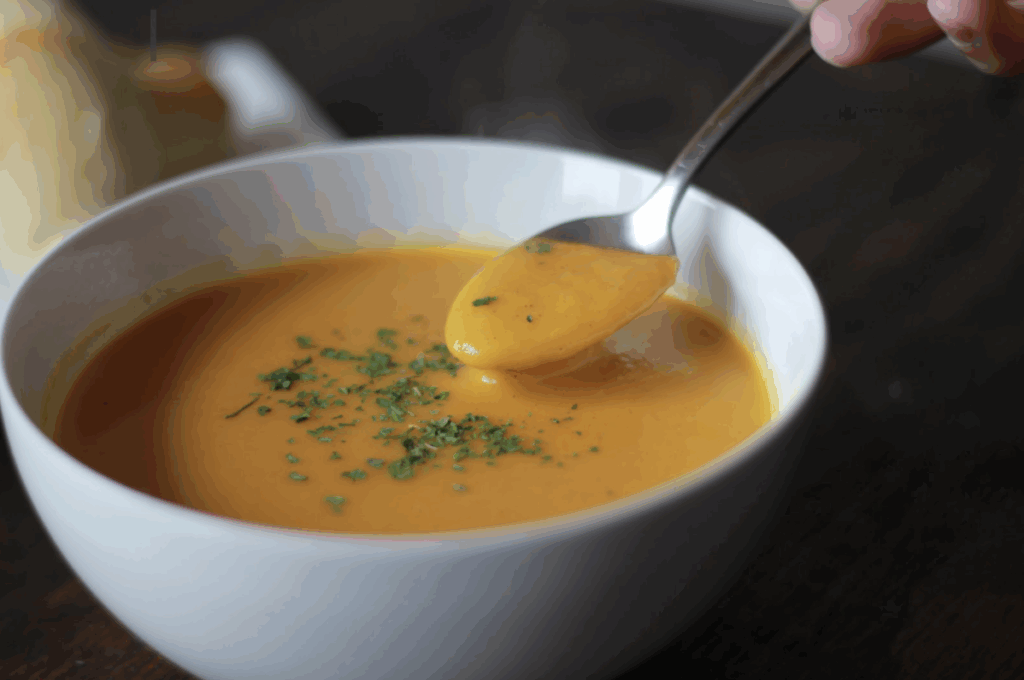
4. Plan ahead and eat sensibly leading up to the holiday meal/party.
When you know you’re headed to a holiday gathering, choose healthier foods throughout the day or days leading up to the meal. Choose oatmeal with berries for breakfast, a entree salad with raw vegetables and beans for lunch, and you’ll have more flexibility to enjoy some of your favorite holiday treats with less guilt. Plus, you won’t show up starving to the event which makes temptation easier to succumb to.
5. Eat slow and evaluate your hunger.
When I see my 13-month old daughter eat, I’m reminded how eating should be something we do at a slow rate not only to truly enjoy our food, but also to reduce the amount we eat.
We’ve all been there. We eat eat everything on our plate as if we are in a food eating contest and then we immediately move to our second plate of food. And what happens after the second helping?You’re overly stuffed.I don’t know about you, but the stuffed feeling is not a comfortable one.
Think of your hunger on a scale of 1 to 10, with 1 being “starving” and 10 being “stuffed”. Eat slower, enjoy the company around you, and evaluate your hunger on this scale. When you get to 7 or 8, it’s time to put down the fork.

6. Fill up on fruits and vegetables first.
Fruits and vegetables are full of water and fiber making them nutrient dense without being calorically dense! When you are filling up your plate, start with the fruits, vegetables, and green salad. Fill at least half of your plate with these low calorie foods and the rest of your plate with smaller amounts of the calorically dense dishes. Your waistline will thank you later.
7. Exercise!
The holiday season is so busy and we tend to put the gym or workout at the bottom of the to-do list. Exercise needs to be your priority — consider it an appointment you cannot miss.
If you can’t make it to the gym or exercise class, consider a walk around the neighborhood to check out some of the pretty Christmas lights. Burning an extra 150 calories per day, the equivalent to walking about 1 ½ miles, can swing the scale by about 1 pound this holiday season (calculated with 150 calorie burn over the course of 21-days).
8. Avoid temptations in the workplace.
I am utterly amazed by the amount of treats my patients describe coming into the workplace. Cookies. Doughnuts. Cream puffs. Pizza. Luckily, the cancer center I work at isn’t like this. Sure, there are occasional treats, but they certainly aren’t daily–or even weekly. If you find yourself easily giving into the temptations in the workplace, set a goal of limiting yourself to one treat per week and no more. It will help you evaluate if those calories are really worth it (see #10)!
9. Use a plate–and a smaller one at that!
At most celebrations, people gather around the food area, especially the horderves. This leads to picking at the food all evening. Instead, grab the smallest plate available and take a small portion of the foods you want to try. Putting it on a plate will allow yourself to see the amount of food you are consuming rather than constantly picking–those calories add up quickly!
10. Make the calories worth it.
If I’m going to indulge, I’m going to make it worth it. Overtime, I’ve learned what is truly worth the calories and what is not. Grocery store bought cookies? No, thanks. Homemade chocolate chip cookies? Yes, please.
Aim to not eat the treat just because it’s there. I’d much rather use my calories for something I’m going to really enjoy. (Ahem, the chocolate chip cookies below!)
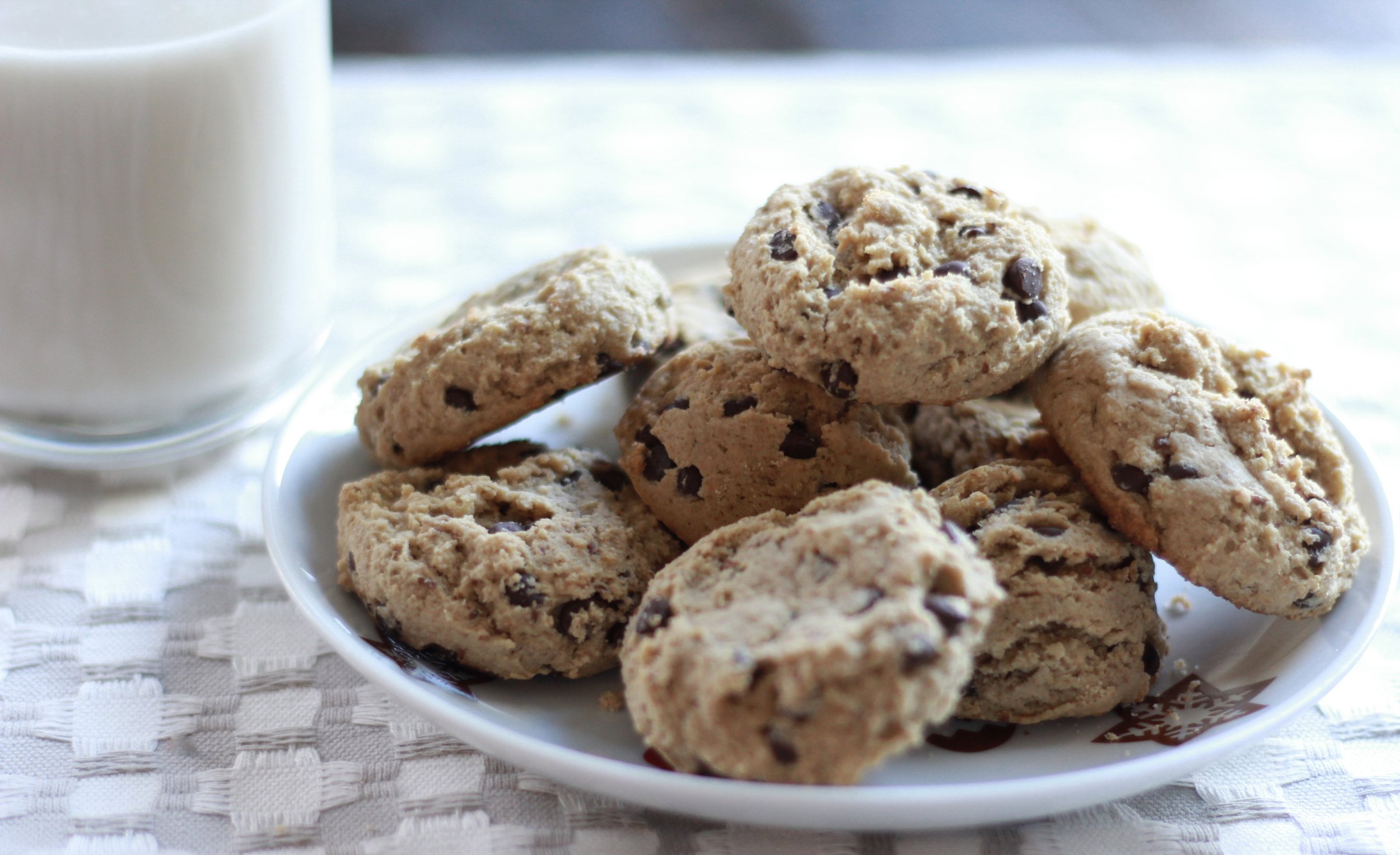
Bonus: Remember what the holidays are truly about.
When the holidays approach, most think about stress, presents, food indulgences, etc. Regardless of the holiday(s) you are celebrating, holidays are heavily rooted in food traditions. Instead of focusing on the food and what else comes with the holidays, let us remember the true reason for the season. Take a step back, take 1-minute to reflect on what the holiday is truly about, and let that be your focus in the upcoming weeks.
Let Me Know: What are you going to choose to focus on this holiday season?
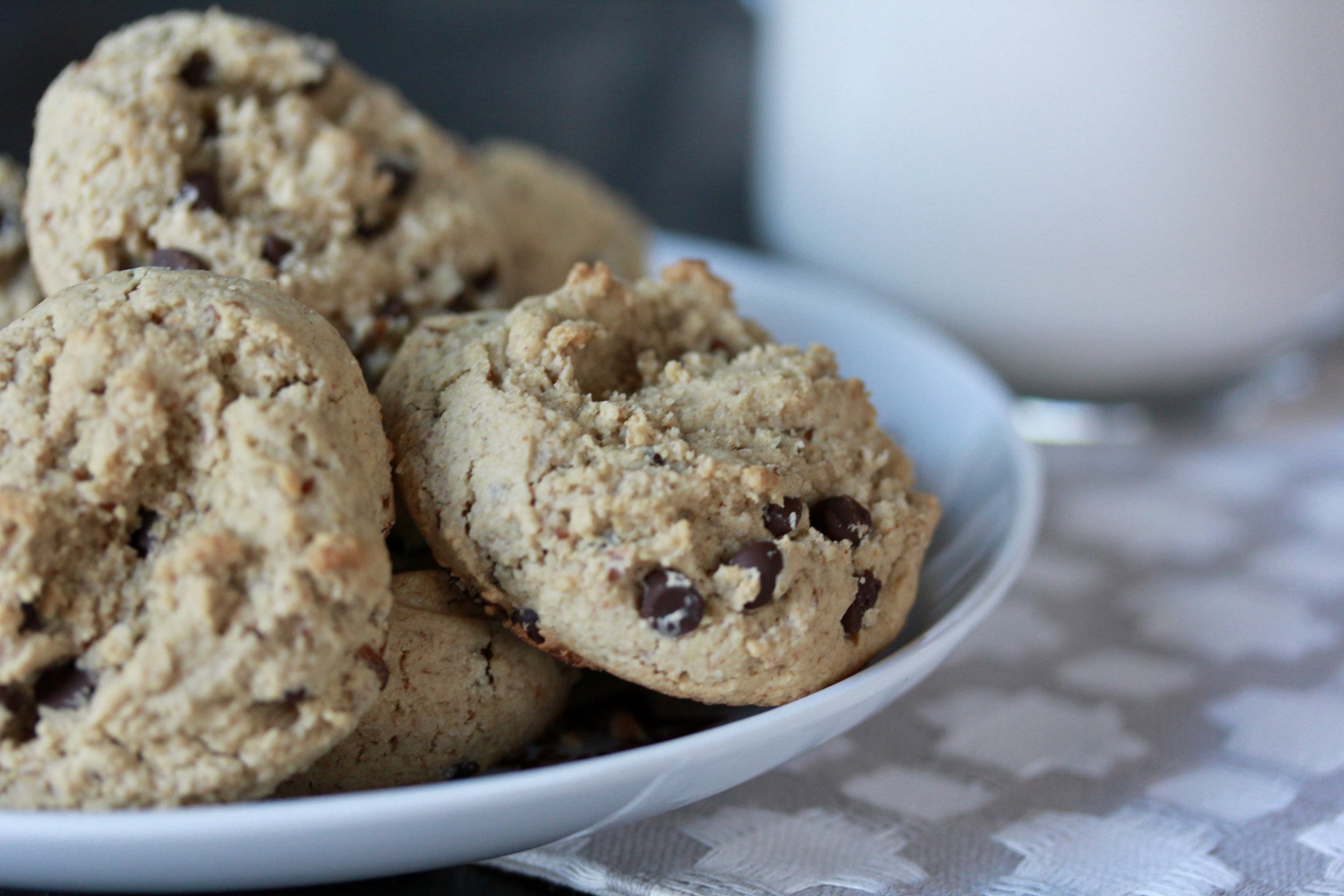
Chocolate Chip Cookies
Recipe Adapted from: Forks Over Knives
Yields: 18 cookies
nutrition facts:
per cookie, if 18 are made: 120 calories, 4 grams fat, 18 grams carbohydrate, 1.5 grams fiber, 10 grams sugar, 3 grams protein
ingredients
1/3 cup unsweetened applesauce
1/3 cup natural peanut butter*
1/2 cup granulated sugar
1 tablespoon ground flaxseeds
2 teaspoons vanilla extract
1 1/3 cup oat flour**
1/2 teaspoon baking soda
1/2 teaspoon salt
1/4 cup whole wheat pastry flour***
1/2 cup dairy-free chocolate chips
notes:
*Feel free to substitute almond butter.
**If you do not have oat flour, simply grind old fashioned oats in a food processor until fine.
***You may substitute sorghum flour to be gluten-free if needed.
directions
Preheat the oven to 350°F. Line two large baking sheets with parchment paper or Silpat baking mats.
In a large mixing bowl, add the applesauce, peanut butter, sugar, and ground flaxseed. Using a large fork, mix together until smooth.
Add the vanilla and mix again. Next, add the oat flour, baking soda, salt. Mix well. Add the whole wheat pastry flour and chocolate chips.
Using a tablespoon or a small cookie scoop, add spoonfuls of batter onto the baking sheets, about 2 inches apart. Flatten the cookies a bit, as they will not spread too much during baking.
Bake for 8-10 minutes.
Remove cookies from the oven and allow them to cool for 5 minutes before transferring to a cooling rack.
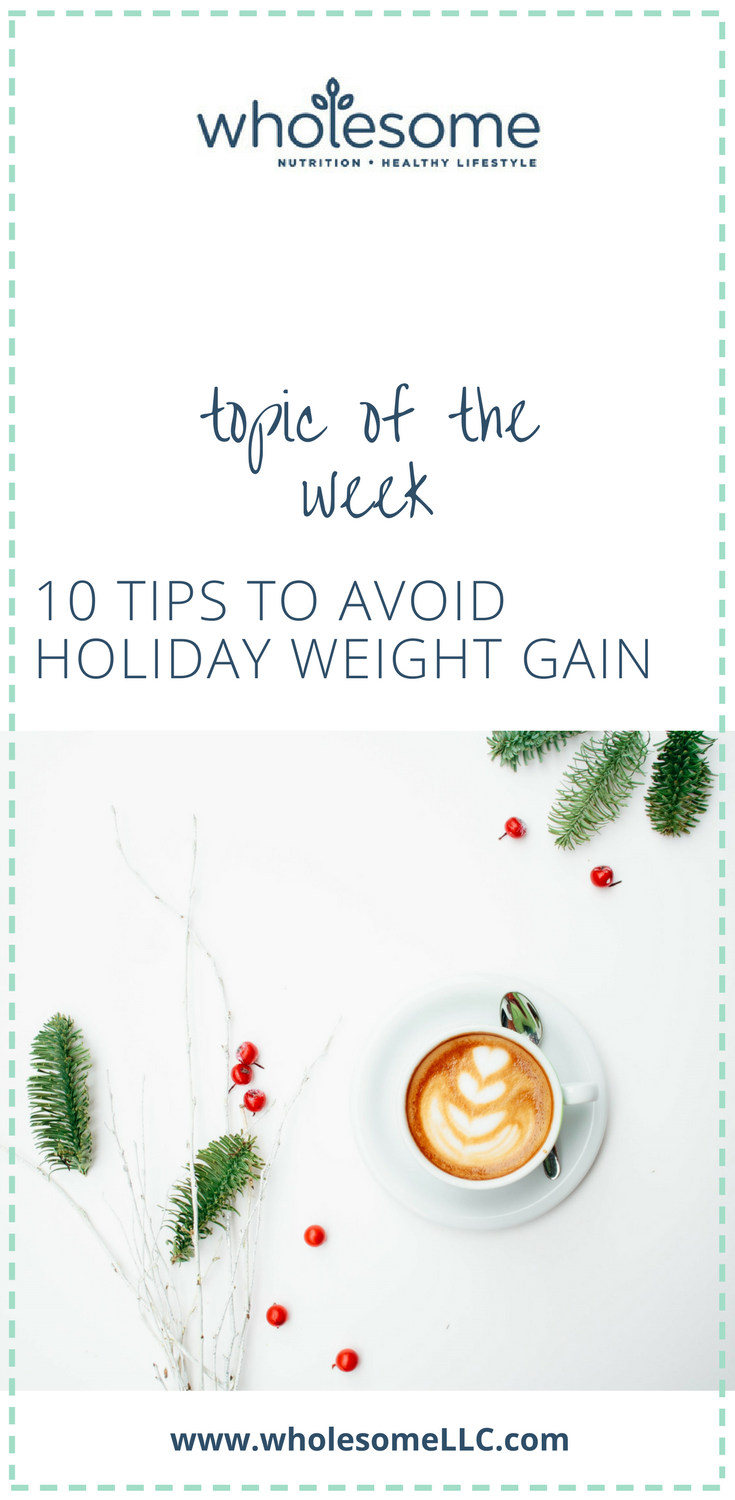
10 Tips to Avoid Holiday Weight Gain + Chocolate Chip Cookies
Wholesome LLC is not a medical practice, and its employees cannot offer medical advice. This website provides educational information but it is not a substitute for medical advice from a licensed medical professional who is familiar with your particular facts and circumstances. The information contained on this website is not intended to diagnose, treat, or cure any disease and shall not be construed as medical advice. The information and education on this website is provided for you to use at your own discretion.
You can further review our disclaimer here.
Wholesome
About Alison
Courses & Programs
The Wholesome Journey
Free Resources
FAQs
Press & Media
Recipes
Blog
Contact Us
Shop
© 2025 Wholesome, LLC All rights reserved.
Privacy Policy
Terms of Use
Disclaimer
Mobile Terms of Service